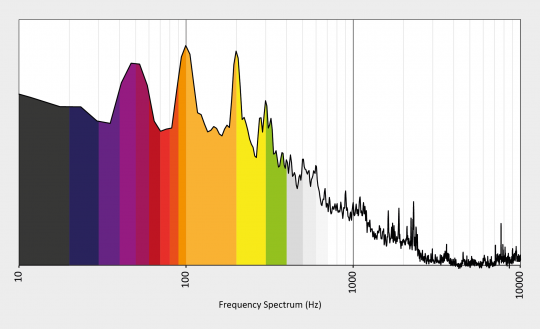Some information about the science of low frequency noise and vibration and our services in this field.
Vibration testing services
At MAS we offer continuous noise and vibration monitoring using specialist highly-sensitive equipment, including tools and software we have developed ourselves to meet the unique needs required in each case.
Where necessary, we work with both parties and Local Authorities to ensure that the monitoring is comprehensive and targeted to the requirements of the situation.
We also regularly provide evidence at planning inquiries and appear in court as an expert witness as required.
Low frequency construction noise and vibration
Construction and demolition is a common source of noise and vibration problems, especially in a built-up environment. Activities such as road, rail (above and underground), building construction, factories and mechanical work.
The Control of Pollution Act 1974 sets out the legal framework for the management of construction noise and vibration. There is a legal requirement by those responsible for construction works to use the Best Practicable Means (BPM) to control the noise and vibration arising from the works. Local Authorities may serve a notice under Section 60 to apply controls and restrictions on the way the construction works are undertaken.
In order to control a noise or vibration problem it may be necessary for a full survey to be undertaken with specialist noise and vibration testing equipment. An assessment to find potential causes or risks from the activity including consideration of the transmission path of the noise or vibration (air or ground-borne), any human exposure or structural effects and any control measures that can be introduced for mitigation of the problem.
In detail: vibration, infra-sound and low frequency hum/noise
Low frequency noise is often a major problem in nuisance cases and sound at lower frequencies is harder to control. Screening becomes less effective at reducing the noise at lower frequencies, this is because it is less directional and diffuses more easily travelling around a barriers edges. Insulation is also less effective at lower frequencies and thicker and denser materials are required to reduce the level.
When the frequency of the sound is so low that it becomes in-audible to the human ear (usually below 20Hz) we describe it as infra-sound. Despite not being able to hear the noise, it does not mean that is has no effect on health. It is possible for other parts of the body to be affected by infrasound as the certain low frequencies causes resonance in body parts, for example low frequency sound can affect vision as the human eye resonates at 18Hz.
Vibration is another aspect commonly associated with low frequency noise. It can be transmitted both through the ground (ground-borne) and through the air (air-borne) with each method requiring different approaches to control. The vibration can then cause annoyance by generating noise, sensations or cause structural damage. In certain cases there could be interference caused with specialist vibration sensitive equipment.

